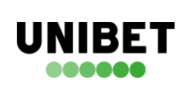Pai Gow poker explained: a unique casino game
Pai Gow poker isn’t the first game greenhorns clamor for when they step into a casino, either online or brick-and-mortar, and that’s precisely their loss. Most folks glance at Pai Gow and think it’s some convoluted blend of poker and mahjong. Truth is, Pai Gow poker holds its roots in ancient Chinese dominoes but was Americanized into a seven-card challenger that pits player against dealer, not other players. If you understand five-card poker hand rankings and can tie your shoes, you’re halfway there.
Table of contents
Understanding the foundation of Pai Gow poker
Let’s knock out the basics before diving into the meat of the strategy. Pai Gow poker uses a standard 52-card deck plus a joker. That joker isn’t a wild card like in kids’ games; instead, it plays as an ace unless it’s used to complete a flush or straight. A lot of folks miss that detail and tank their hands before the game even gets rolling.
You’re dealt seven cards, which you knead into two hands: a five-card “bottom” hand and a two-card “top” hand. Both hands are played against the dealer’s respective hands. Now this part’s crucial, your bottom hand must outrank your top. Screw that up and it’s a foul hand, and you lose, period. No room for debate.
The house position adds subtle pressure
The dealer represents the house, but many tables take rotating turns being the “banker,” and let me tell you, there’s more edge here than rookies realize. Being banker means you’ll tie more hands and have better odds. It’s subtle, but in games determined over long cycles, those extra 1-2% swings make bank. You’ve got to understand when grabbing banker is worth the higher wager it requires.
Breaking down strategy like a veteran
Here’s where the wheat really separates from the chaff. Most newbies just dump their highest-ranked cards into the five-card hand without considering balance. That’s like putting your best soldered joints on a weak circuit board, short-sighted and ultimately useless. You need harmony between your top and bottom hands.
Know when to split up powerful combinations
Say you’ve got a full house. Most will slap that straight into the five-card set. Wrong move. You often need to break that house, keep the pair in your top hand and use your trips in the bottom. Why? Because your two-card hand needs teeth. If it can’t beat the dealer’s two-card hand, or tie it at the very least, you’re sunk. It’s a humble sacrifice up front for net gains over time. That’s long-view risk management. It wins tables.
Two-pairs call for layered thinking
Playing two pairs isn’t simple arithmetic. High pairs like Aces and Kings? Split those without hesitation. But what about 5s and 6s? That’s situational. I’ve seen sharp players calculate the dealer’s most probable holdings, then deduce the split that will most frequently create at least one winning hand combo. It’s not about greed. It’s about ensuring one hand does the heavy lifting.
Common errors I’ve seen a thousand times over
Probably the cardinal sin in Pai Gow poker: overvaluing your bottom hand. Everyone wants to win both, but that clouds judgment. When you hear the term “push,” understand its power. Winning one hand and losing the other results in a push. No gain, no loss. But it keeps you alive. Too many players risk fouling hands trying to streak wins. Smart is steady. Steady is winning eventually.
Another blunder is ignoring ties. I can’t count the number of times I’ve told someone: if both your hands tie with the dealer, you win nothing. That’s a push. You’ve got to outperform, not match. In fact, knowing when to tie strategically, say, tie the lower hand while surging with the stronger hand, that’s real nuance. That’s field wisdom.
Reading dealer patterns for added insight
After a few hundred hands, you’ll notice dealer setup is predictable. They often follow house rules rigidly: highest hand in back, best remaining two cards in front. Use this to your advantage. If I spot 10, Jack, Queen among my cards, I know I’m likely safe putting Queen-Ten up top. It’s like a chess player knowing an opponent’s opening gambit.
Retaining bankroll sanity
One of Pai Gow’s best-kept secrets? It’s a slow-burn game. Lots of pushes mean you can stretch a modest bankroll over hours of play. That’s gold dust for anyone trying to maximize entertainment without hemorrhaging chips. I’ve seen players get twenty hands deep without a net loss. Try that in Blackjack or Caribbean Stud, and trust me, I’ve studied the Caribbean Stud strategy inside out. Pai Gow is its own, patient animal.
Moves to maximize value in online play
Online tables strip some human errors away, but open doors for tech-savvy wins. Many platforms embrace hot new payment options, letting you top up and withdraw without fuss. If you’re serious about a mobile-first approach, I’ve trusted Pay by Phone casinos to keep things nimble with near-instant deposits straight from your carrier funds.
Cash management with smarter tools
If you’re loading up your bankroll online, use tested-and-true payment processors. I swear by Skrill for speed and low fees. For security-focused players, Paysafecard offers peace of mind through voucher systems. And if you’re keen on keeping payments in sync with everyday expenses, PayPal does the job, especially when linked to reward-heavy accounts. All efficient tools for a discerning bankroll manager.
Final takeaways from a crusty veteran
Pai Gow poker isn’t about quick jackpots or chaotic betting. It’s about balance, mechanical, mental, and monetary. You set the pace, not the table. Learn that and you’ll master the game over time. Fast hands won’t beat slow thinking. Count your moves, not just your chips. And never forget, the best players don’t just survive variance; they plan for it like a farmer watches clouds.
So next time you’re staring down seven cards on a digital felt, take a breath. Think like a craftsman, not a tourist. The game rewards those patient enough to learn its rhythm. Nothing about Pai Gow poker is left to luck, not when your mind’s sharper than the deck it’s dealt from.





0 Comments